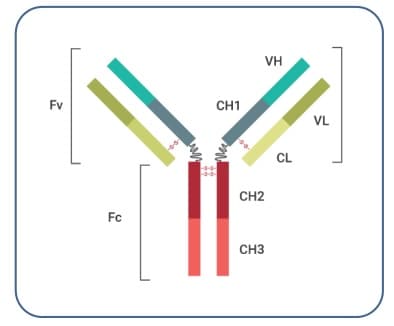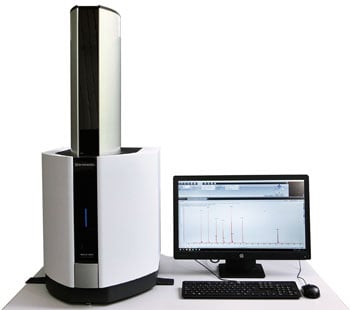Detection of High-mass Proteins Using a Benchtop MALDI-TOF Mass Spectrometer
The applicability of MALDI-TOF mass spectrometry to perform protein detection is well recognized in the life science field. In this field, SDS polyacrylamide gel electrophoresis and size exclusion chromatography have been historically used, however, they have drawbacks such as being time-consuming or lacking accuracy in molecular weight determination. Due to its ability to provide more accurate molecular weight information, MALDI-TOF mass spectrometry has become the primary tool for the analysis of protein primary structures. Moreover, in recent years, the analysis of proteins at the femtomole and subfemtomole levels is often required, which is increasing the demand for higher sensitivity measurements with MALDI-TOF mass spectrometry.
The mass range of MALDI-TOF mass spectrometry is potentially unlimited and gives full access to low- to high-mass molecules, such as antibodies. Monoclonal antibodies (see Fig. 1) are utilized for diagnostic and therapeutic purposes. In their development and quality control processes, it is very important to use fast and reliable analytical methods.
Here, we demonstrate the capability of a benchtop MALDI-TOF mass spectrometer (MALDI-8020)to perform high-throughput protein detection with high sensitivity.

Fig. 1 Generalized Structure of an Antibody
Benchtop MALDI-TOF MS "MALDI-8020"

Key features:
- Linear mode (positive ion) MALDI-TOF
- 200 Hz solid-state laser, 355 nm
- Load-lock chamber for fast sample introduction
- UV laser-based source cleaning (patented)
- Small footprint/benchtop design
- Quiet operation (<55 dB)


